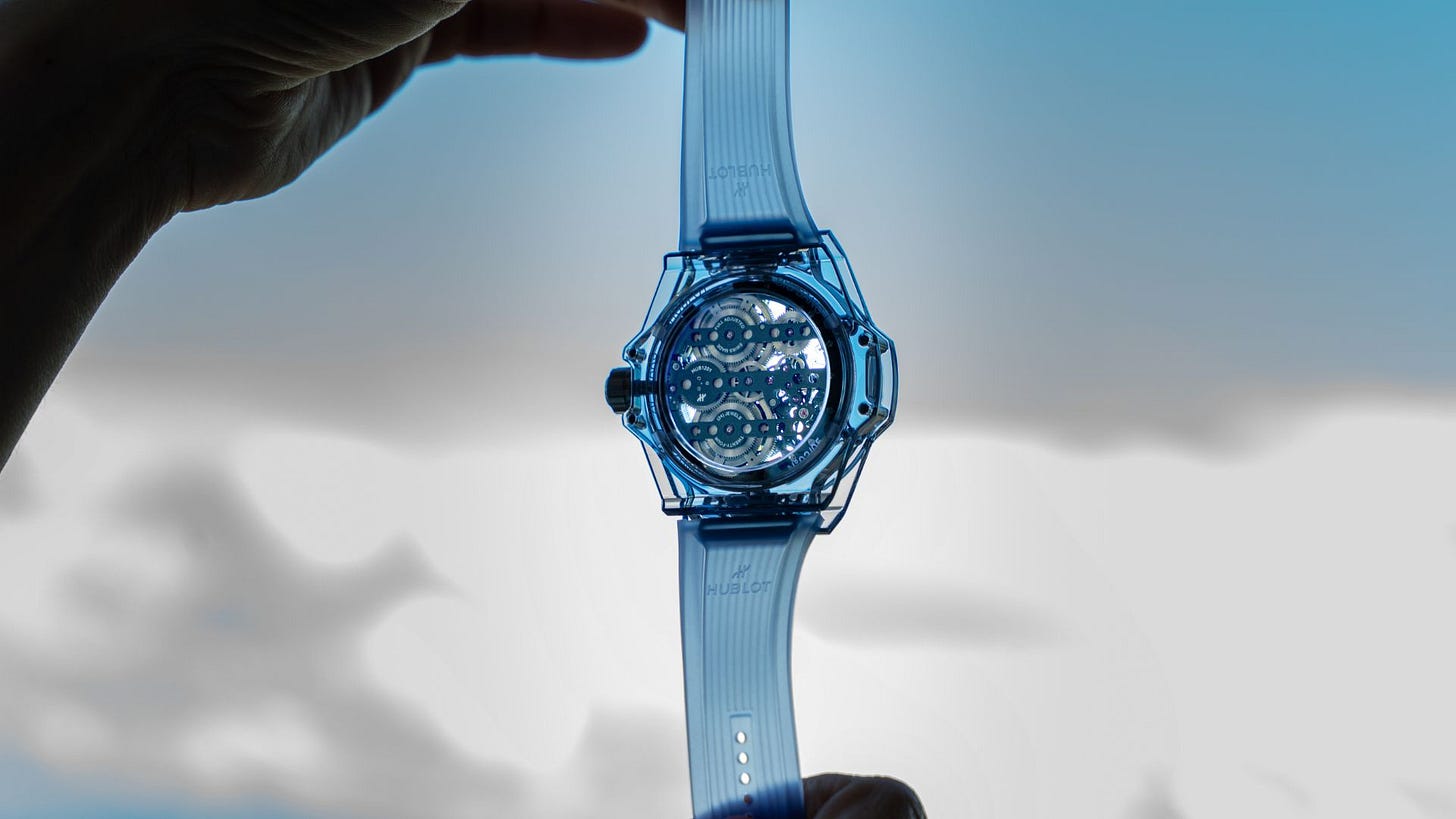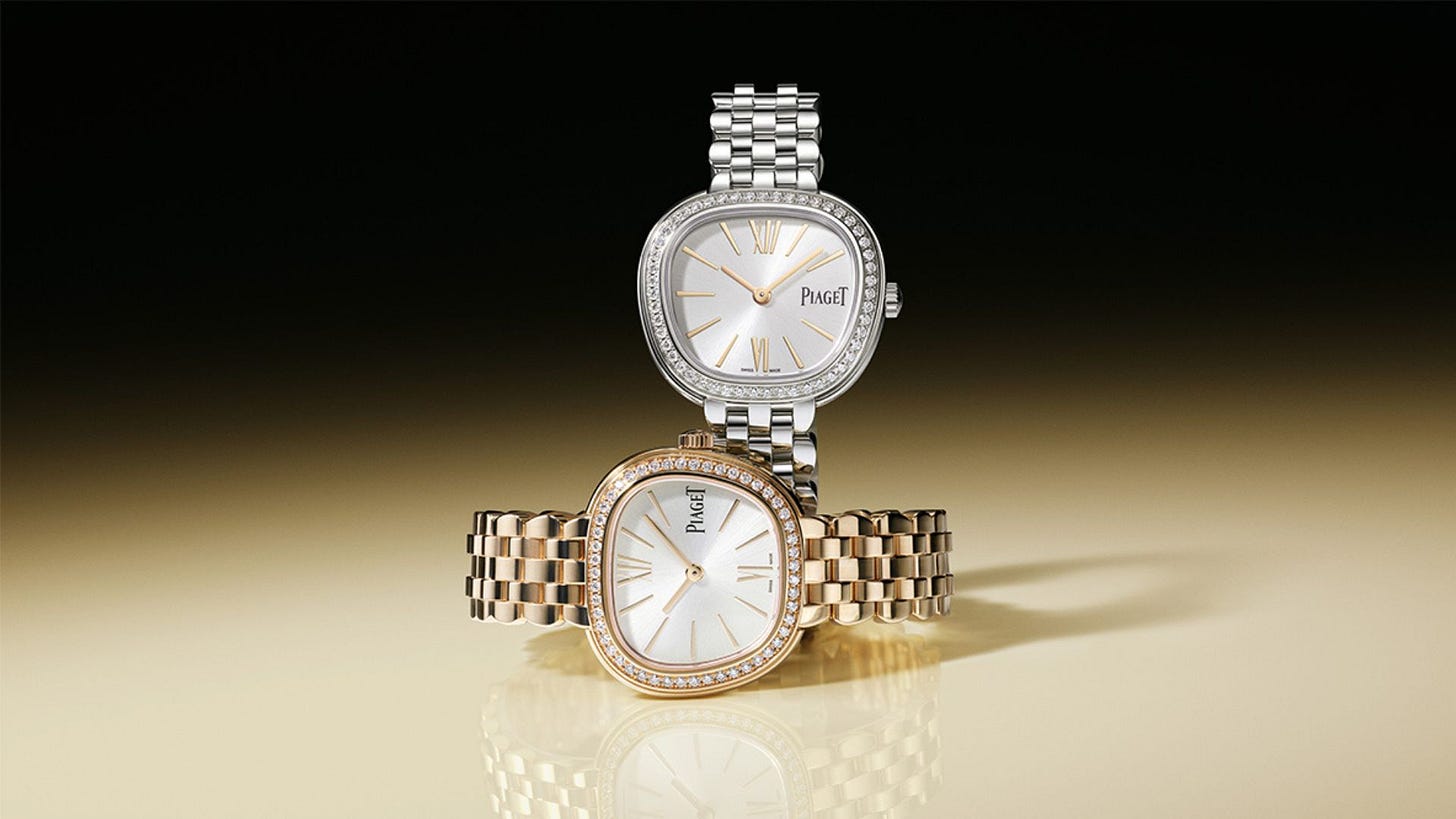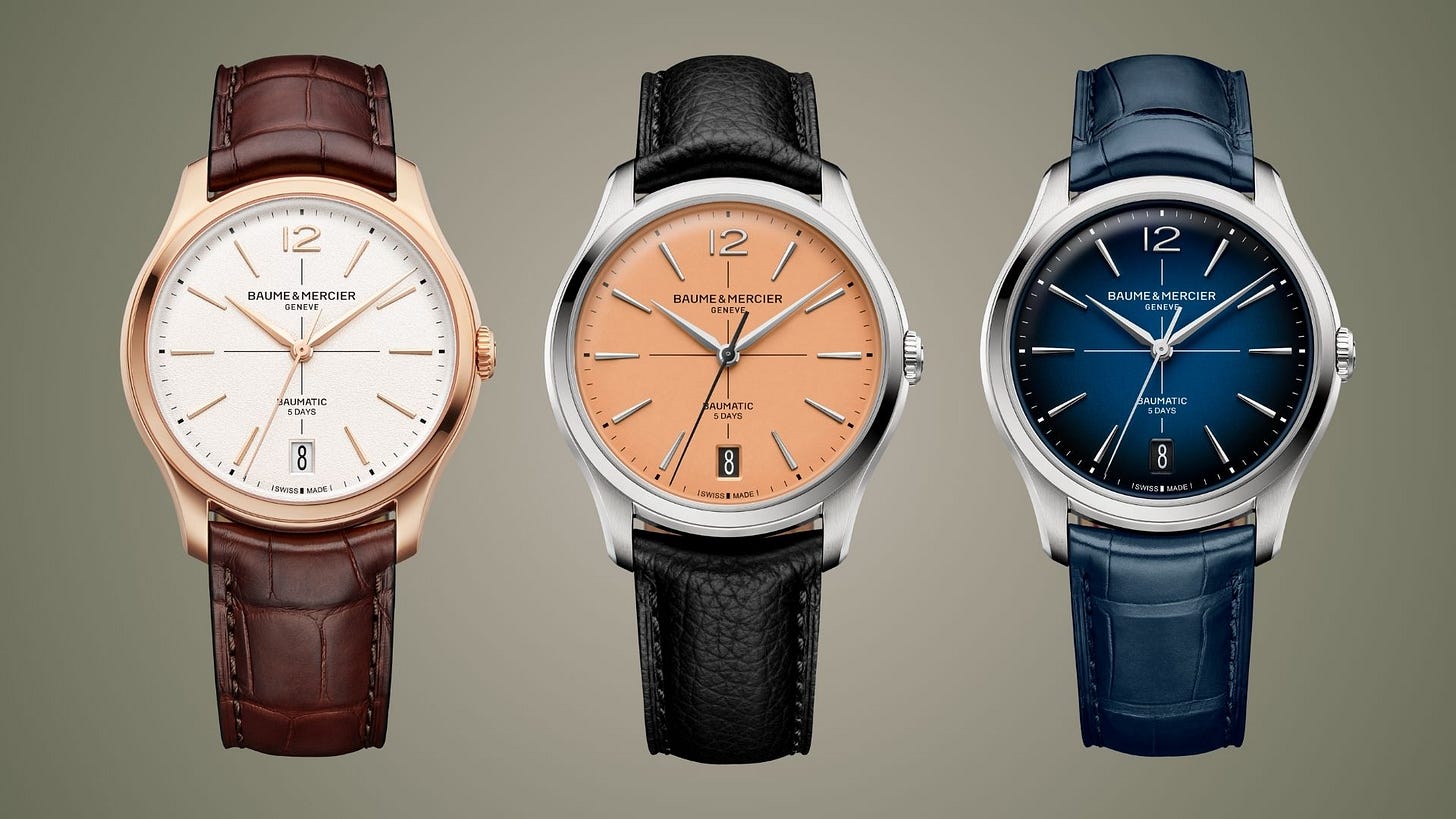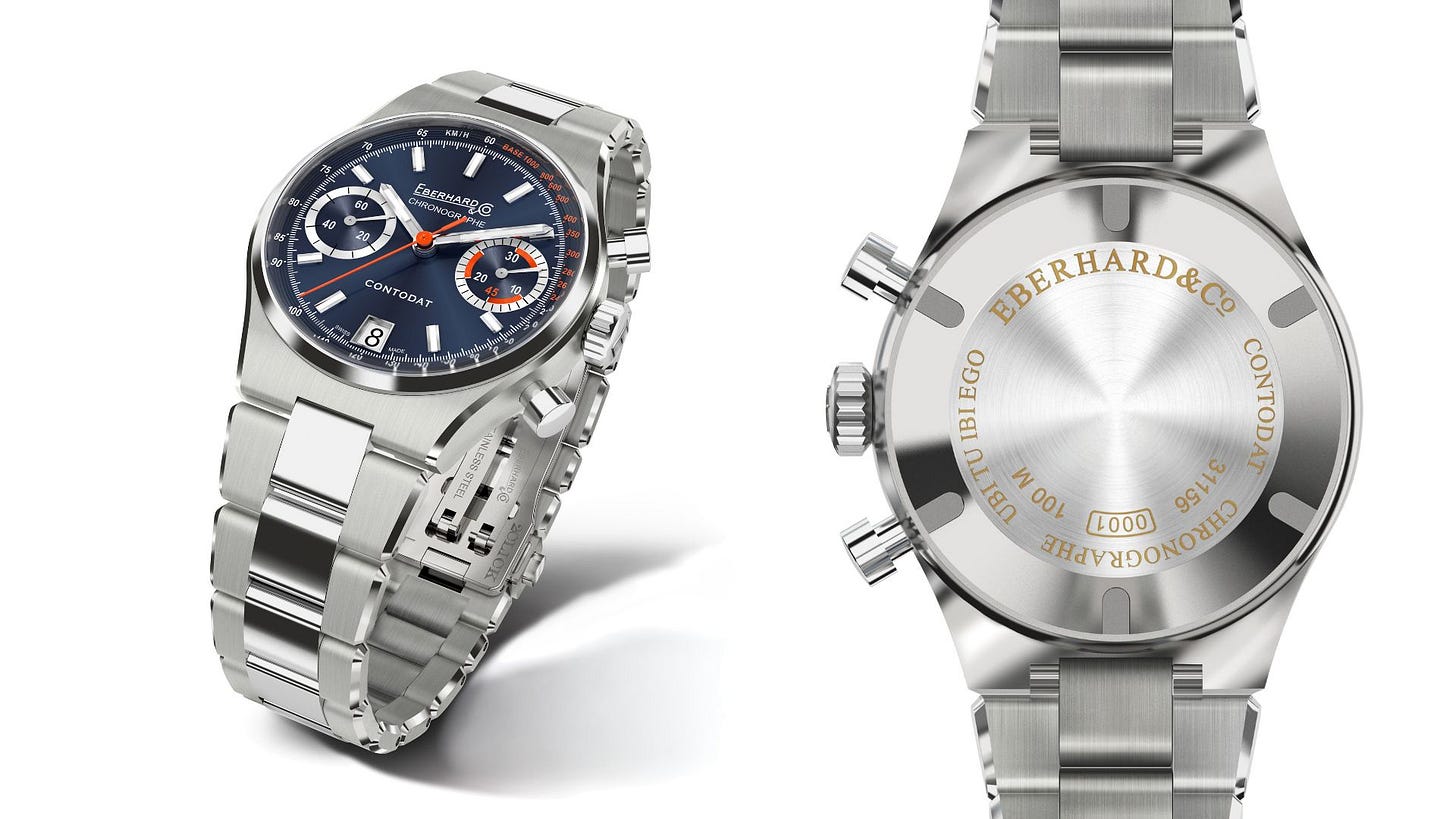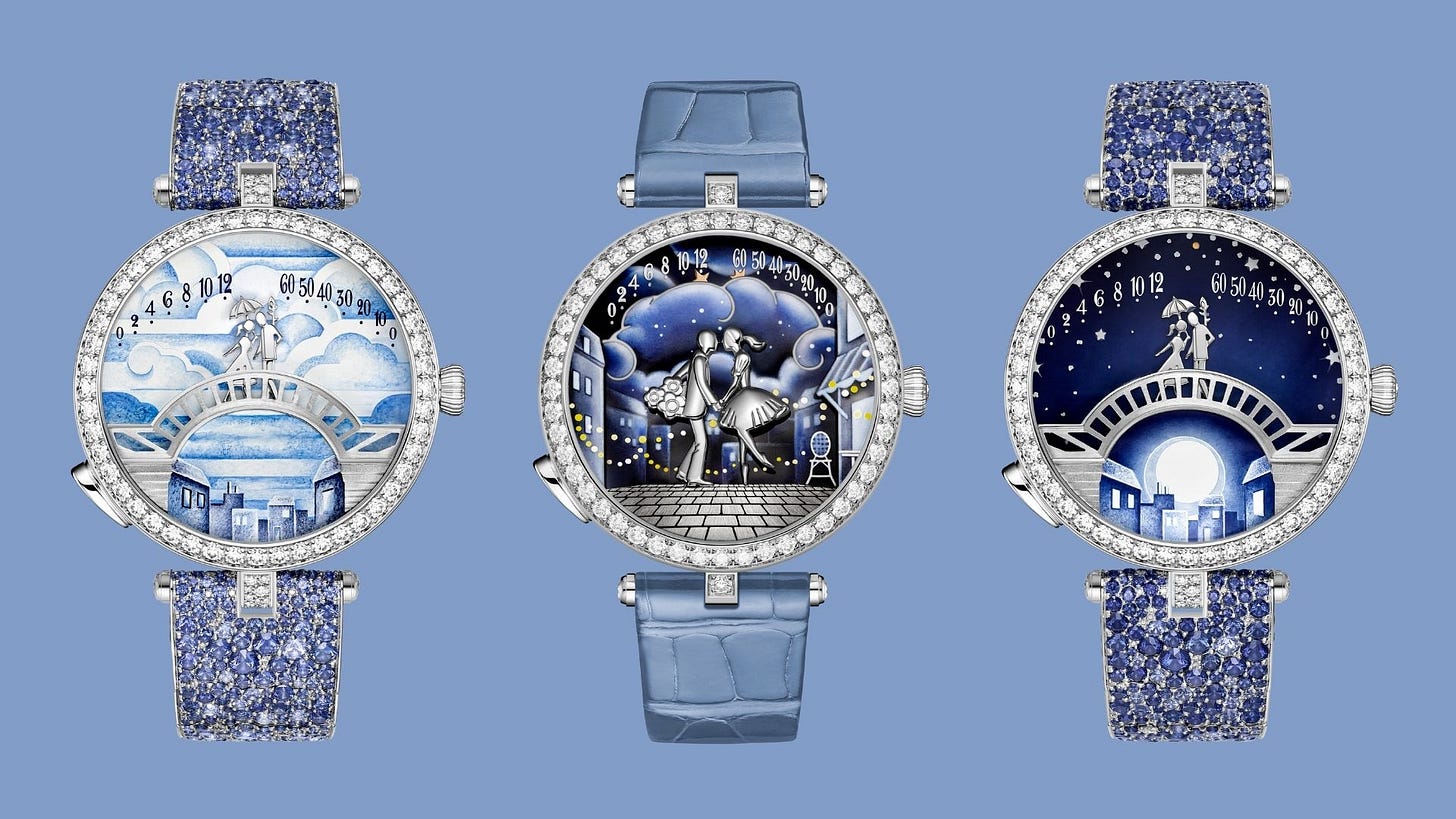Big Bang’s 20th, Piaget’s Sixtie Comeback and Moonphases Shine Bright
This week on WorldTempus: Hublot celebrates 20 years of Big Bang, Piaget revives the Sixtie, and moonphase complications light up Watches and Wonders.
WATCHES AND WONDERS NOVELTIES
Hublot’s Big Bang Turns 20 in Full Color
Good evening, and welcome to this special edition dedicated to a true watchmaking phenomenon. Hublot’s Big Bang, the model that redefined the rules of luxury horology, celebrates its 20th anniversary with an explosive array of color, innovation, and technical mastery—proving once again that disruption is in its DNA.
First unveiled in 2005 under the leadership of Jean-Claude Biver, the Big Bang instantly made headlines by embodying Hublot’s revolutionary “Art of Fusion.” With its daring combination of rubber and gold, this bold creation earned the prestigious Design Prize at the Geneva Watchmaking Grand Prix. More than just a timepiece, it became the brand’s manifesto—radical, vibrant, and unafraid of standing out.
Over the past two decades, Hublot has strengthened its technical autonomy. After joining LVMH in 2008, the brand launched its own movements, including the UNICO chronograph and the MECA-10 with a 10-day power reserve. Material innovation also became a cornerstone of the Big Bang legacy, with breakthroughs like scratch-resistant Magic Gold and colored ceramics developed entirely in-house. The brand’s mastery of sapphire cases, introduced in 2016, continues to set it apart.
To mark the anniversary, Hublot presents a series of limited-edition Big Bangs in the materials that shaped its history—Titanium, King Gold, Ceramic, and Magic Gold—alongside a “Master of Sapphire” collection in five transparent hues. At the pinnacle sits the “Materials & High Complications” box, featuring five exceptional tourbillon models in sapphire, ceramic, carbon fiber, and Texalium, offered as a collector’s set for one million Swiss francs.
With vivid pastel editions, new One Click models, and continued architectural expansion in Nyon, the Big Bang remains as bold and youthful as ever.
Piaget Revisits Its Legacy with the Boldly Shaped Sixtie Collection
Piaget has once again turned to its own archives to breathe new life into a daring shape first introduced in the late 1960s. On April 1, 2025, the brand unveiled the Sixtie collection, a modern reinterpretation of the trapezoid case that defined its groundbreaking 1969 designs. According to creative director Stéphanie Sivrière, “If you take a look at this era there is one shape that really steals the spotlight, it was the trapezoid shape.”
The new models stay true to this bold identity, featuring revised proportions and complex finishes that play with light across their asymmetric cases. The design challenge was significant. “From a design standpoint, it takes forever to master the right size, curves, balance. Then creating a bracelet that matches, of course,” Sivrière explained. Each case measures 29 millimeters at its widest point and incorporates chiselled gadroons around the case and bracelet links for a cohesive aesthetic.
Although Sivrière is a known advocate of mechanical movements in women's timepieces, all six Sixtie models are quartz-powered. “Only a new bespoke movement would have fit a case so specific, but it would have added so much height,” she noted. However, she hinted that an automatic version may be considered in the future.
The trapezoid watch is not the only legacy Piaget is revisiting. Following the revival of the sautoir in 2023, the Sixtie collection continues the celebration of Piaget’s heritage by offering pieces worn as jewelry around the neck. “It’s something so Piaget,” said Sivrière, acknowledging their overwhelming popularity.
Balancing heritage and contemporary appeal remains central to Piaget’s philosophy. While shaped watches may be admired more than purchased, the maison continues to experiment boldly. “There is always an element of surprise, of boldness, of color to everything we do,” Sivrière concluded.
Lunar Serenade at Watches and Wonders 2025
This year at Watches and Wonders, amid a dazzling array of novelties and technical achievements, one celestial body outshines all others: the Moon. A recurring theme across several standout releases, the moonphase complication returns with poetic presence and mechanical finesse, embodied in some of the most refined timepieces on display.
Chopard introduces a refined addition to its L’Heure du Diamant line, featuring a moonphase complication at the center of the dial. Surrounded by shimmering diamonds, the Moon is set against a backdrop that evokes a starlit sky, enhanced by the luminous bezel and delicate proportions of this gem-set watch.
Vacheron Constantin honors its 270th anniversary with more than ten new models, among which the Traditionnelle Manual Winding Moonphase stands out. A mother-of-pearl dial, diamond-set bezel, and elegant pink alligator strap frame the moonphase at 9 o’clock, blending heritage and refinement in a composition that reflects the brand’s longstanding craftsmanship.
Jaeger-LeCoultre brings its Reverso Tribute Nonantième “Enamel” into the spotlight, expanding the iconic collection with a dual-sided approach. The front dial displays a taupe enamel finish with moonphase at 6 o’clock, while the reverse reveals a deep blue celestial tableau featuring a sun-and-moon day-night indicator. Both faces are housed within an 18K rose gold 49mm case, offering visual and technical depth.
A. Lange & Söhne presents a high-complication piece that evokes the quiet mystery of space. The Minute Repeater Perpetual showcases a black enamel dial with a moonphase at 6 o’clock, alongside a minute repeater, perpetual calendar with date, month, year, 24-hour display, and stop seconds—all enclosed in a platinum case.
At this year’s event, the Moon does more than tell time. It guides the narrative of watchmaking excellence, shaping some of the most compelling pieces unveiled in Geneva.
The New Clifton Baumatic Collection
At Watches & Wonders 2025, Baume & Mercier offers a refined interpretation of its heritage through the updated Clifton Baumatic collection. Deeply inspired by the sleek, round forms of 1950s watch design, these new timepieces capture the Maison’s long-standing balance between modern precision and timeless aesthetic.
The three new models showcase a streamlined case reduced to 39 mm in diameter and 11.22 mm in thickness. These adjustments enhance both comfort and elegance, reinforcing the Clifton line’s visual identity. Key design elements include longer trapezoidal indexes, an Arabic numeral at 12 o’clock, and a large date aperture at 6 o’clock. The domed sapphire crystal and slender integrated crown contribute to a silhouette that subtly echoes mid-century watchmaking codes.
Each model is powered by the Baumatic BM13-1975A movement, developed in-house. This self-winding caliber offers technical reliability with magnetic resistance up to 1500 Gauss, a 5-day power reserve, and a 4Hz frequency. The movement is finely decorated, with snailed and sandblasted finishes, and an openworked oscillating weight engraved with the Baume & Mercier signature.
The M0A10802 in satin-finished rose gold features a textured off-white dial, enriched by gold-plated hands and indexes, and paired with a brown alligator strap. The M0A10778, limited to 350 pieces, features an opaline salmon dial in a stainless steel case and includes both black and beige calfskin straps. Lastly, the M0A10771 presents a graduated blue lacquered dial with rhodium-plated elements, offered on a blue alligator strap.
Rooted in nearly two centuries of watchmaking tradition, this renewed Clifton collection expresses a refined gentleman’s lifestyle—where past inspirations meet contemporary craftsmanship in subtle, enduring forms.
Eberhard & Co. Revives the 1970s with the Contemporary Contodat Collection
Eberhard & Co., a brand with 138 years of uninterrupted mechanical watchmaking heritage, presents a new chapter rooted in the past. Drawing from its 1970s archive, the Maison introduces a fresh take on the Contodat, now offered as both a chronograph and a time-only model. These new releases are more than a vintage revival—they are, as General Manager Mario Peserico describes, a “philosophical statement.”
The watches, which feature a soldered bracelet and no leather strap option, are purposefully designed to reflect the style and mood of the 1970s. Peserico explains that this era resonates with younger collectors who never experienced it firsthand but are eager to reconnect with its distinctive aesthetics. He notes that “now the time is right to give them this feeling of the 1970s.”
For Eberhard & Co., the Contodat represents continuity. While the brand adapted to quartz in the 1970s and 1980s, it never abandoned mechanical watchmaking. “We never stopped making mechanical watches even in the toughest period,” Peserico insists, emphasizing the brand’s resilience during an era when many competitors either disappeared or shifted focus entirely.
Assembled in La Chaux-de-Fonds using Sellita, ETA, and Unitas movements—alongside proprietary mechanisms—these new Contodat models are updated with modern materials and finishes. The alternating satin-brushed and polished surfaces add visual interest, while orange accents on the subdials, central hand, and tachymeter provide a unifying motif. “For the Contodat we say that we have a fil orange,” Peserico adds, referencing the thread that ties the collection together.
Positioned in the brand’s core price range of CHF 3,000 to 4,000, the Contodat collection aligns with Eberhard & Co.’s broader portfolio expansion. Despite a slight sales dip in 2024, the company remains optimistic. “We are going to Geneva for Watches & Wonders in a confident manner,” Peserico concludes.
The Art of Romance with New Poetic Complications
At Watches and Wonders 2025, Van Cleef & Arpels invites viewers into a world where time becomes a poetic emotion. Through its latest Poetic Complications and Extraordinary Objects, the Maison continues to explore one of its most cherished inspirations: love. As Catherine Rénier, President and CEO of the Maison, notes, these creations “embody both the Poetic Time so dear to Van Cleef & Arpels, its mechanical expertise, and its attachment to the crafts, while expressing one of its founding sources of inspiration: love.”
Fifteen years after the award-winning debut of the Pont des Amoureux, the story expands. The Maison now unveils Lady Arpels Bal des Amoureux Automate, a watch that stages a moonlit dance between two lovers in a guinguette setting. Inside a white gold case framed with diamonds, the scene unfolds across five intricate levels, brought to life with grisaille and colored grisaille enamel. These techniques, involving successive layers of Limoges white over a deep blue base, required forty hours of work and ten kiln firings to achieve the luminous depth of this animated tableau.
A newly developed mechanism orchestrates the couple’s graceful bow and kiss at noon and midnight, or upon request. Achieving such natural movement demanded four years of research and the use of a three-joint mechanical system. Beneath the delicate poetry lies a double retrograde display, true to the Maison’s signature approach.
The Pont des Amoureux collection also returns in four new versions, presented in white or rose gold, with romantic scenes set in varying times of day—dawn, daylight, twilight, and moonlight—expressed through enamel-painted dials and bracelet compositions of diamonds and sapphires.
Finally, in the Automate Naissance de l’Amour, Cupid rises from a basket of sculpted gold feathers, poised to release an arrow. Through these emotive creations, Van Cleef & Arpels reaffirms its vision: that measuring time can be as delicate and meaningful as love itself.





